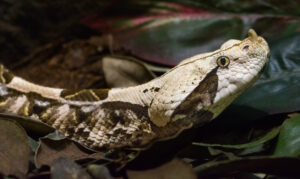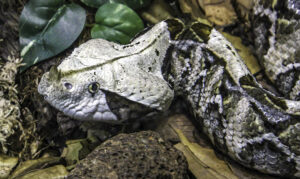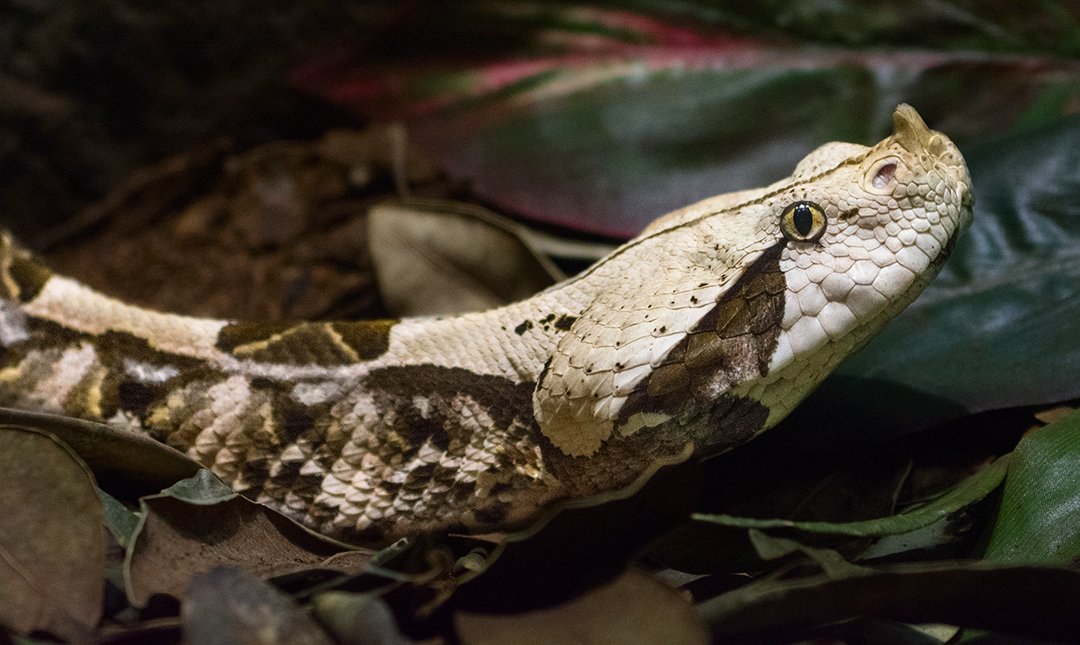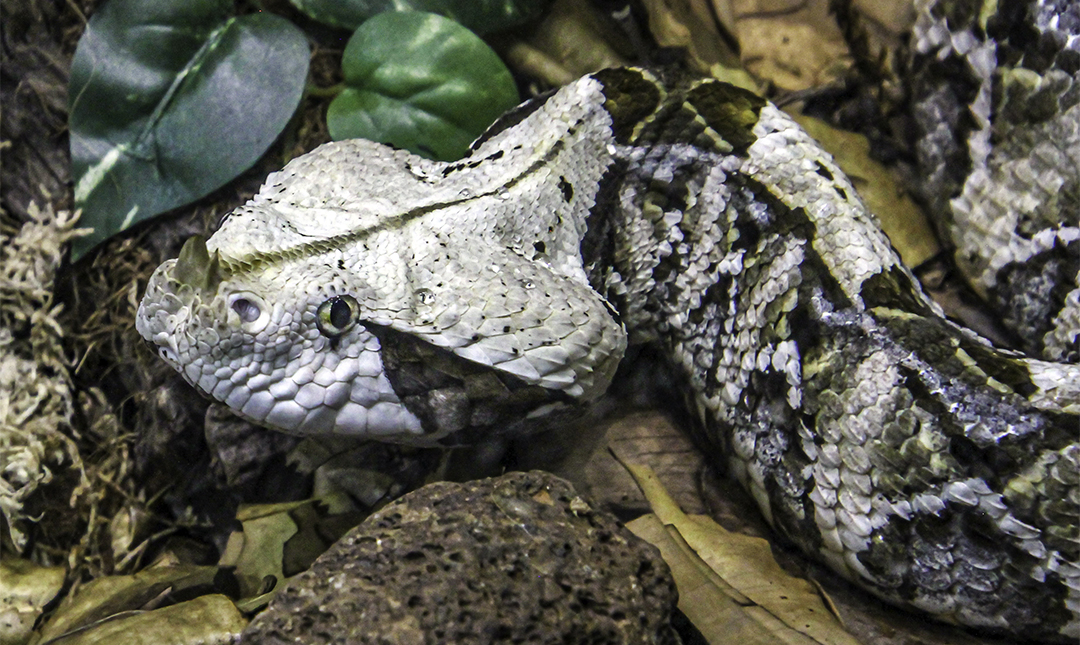About
One of the world’s largest and heaviest vipers, the Gaboon viper also has the longest fangs of any venomous snake, often measuring two inches long or more and folding up against the roof of the snake’s mouth when not in use. This snake has a wide triangular head, vertical slit pupils, and enlarged scales on its nose that look like a pair of horns. As an ambush predator, this nocturnal hunter will lie perfectly still underneath the leaf litter on the forest floor and wait for its prey to pass by. The viper will quickly strike by biting its prey and injecting it with venom. The viper holds onto its victim until it dies, and then consumes the animal whole headfirst.
With the highest venom yield (the amount of venom held in their venom glands at one time) of all venomous snakes, Gaboon vipers have a deadly bite—yet the number of human fatalities caused by these reptiles is lower than one might expect. This is partly because Gaboon vipers tend to be very calm, slow-moving snakes. When threatened, they initially hold very still and hiss loudly as a warning. While Gaboon viper bites are rare for humans, when they do bite, it is often fatal.


Habitat
This species lives in the subtropical forests and savannas of western Africa including Cote D’Ivorie, Ghana, Guinea, Liberia, Sierra Leone, and Togo.
Diet
Gaboon vipers are carnivorous. Their diet largely consists of rodents, birds, frogs, and lizards. Occasionally, they have been known to go after larger prey, such as mongoose and hares.
Physical Characteristics
Gaboon vipers generally grow to a length of about four to six feet and can reach weights of 20 to 25 pounds. In human care, this species has recorded lifespans of 15 to 20 years.
LOCATION WITHIN THE ZOO
You’ll find this animal in the LAIR. See Zoo Map.



